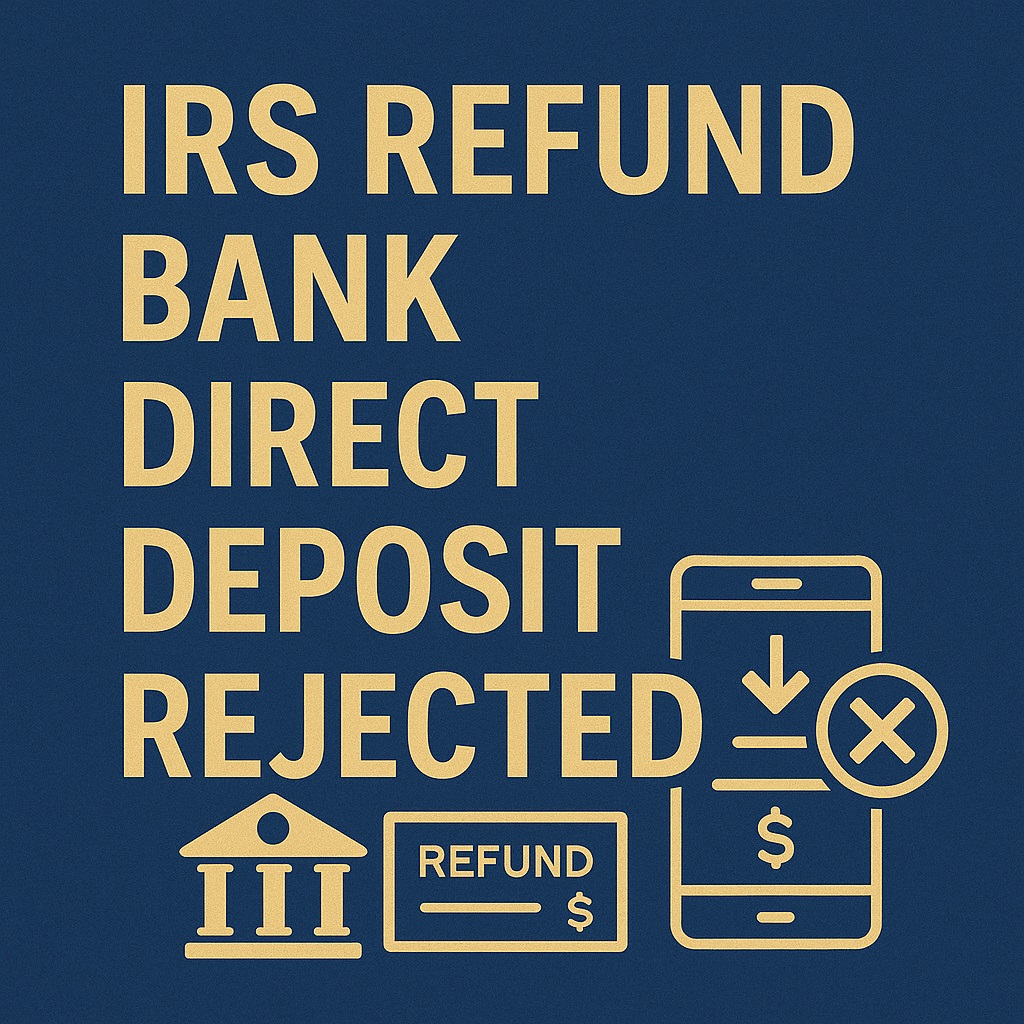Filing your tax return and expecting your refund to arrive via direct deposit is convenient and fast. But what if your bank rejects that deposit? It can be stressful wondering where your refund is and what to do next. Fortunately, the IRS has a process to handle failed direct deposits and ensure you still receive your refund—just in a different form.

Why Does a Direct Deposit Get Rejected?
Common reasons for direct deposit failure include:
- Incorrect bank routing or account numbers entered on your tax return
- The account is closed, frozen, or inactive
- The bank does not accept direct deposits for the account type
- The account is not in your name
- Bank processing errors or restrictions
What Happens When a Deposit Is Rejected?
When your bank rejects the refund deposit, the IRS is notified and will automatically convert the payment into a paper check. This check is mailed to the last known address on file with the IRS. This automatic process avoids the need for taxpayers to contact the IRS in most cases, but it does cause a delay—typically about 1 to 1.5 weeks longer than the original refund timing.
How to Handle the Situation
- Verify Your Bank Information Before Filing: Double-check your routing and account numbers with your bank to avoid errors.
- Ensure Your Address Is Current: The IRS will mail the paper check to the address they have on file, so update your address with the IRS if you’ve moved.
- Wait for the Check by Mail: Depending on mail speed and IRS processing, it may take 1-2 additional weeks after rejection for the check to arrive.
- Contact Your Bank: If you believe the rejection was in error, you can ask the bank to return the funds to the IRS, prompting a paper check issuance if it hasn’t already happened.
- Initiate a Trace if Needed: If you don’t receive the check after several weeks, you may file Form 3911 (Taxpayer Statement Regarding Refund) to start a refund trace with the IRS.
What If the Check Is Lost or Never Arrives?
If the mailed paper check is lost or returned to the IRS due to an incorrect address, processing delays can stretch to 6-8 weeks or more. It’s important to keep your address updated and notify the IRS promptly if mail issues arise.
Final Tips to Avoid This Headache Next Time:
- Always confirm bank details before filing.
- Use your own bank account, not someone else’s.
- Consider e-filing early to catch errors timely.
- Keep track of your refund status on IRS’s “Where’s My Refund?” tool.
